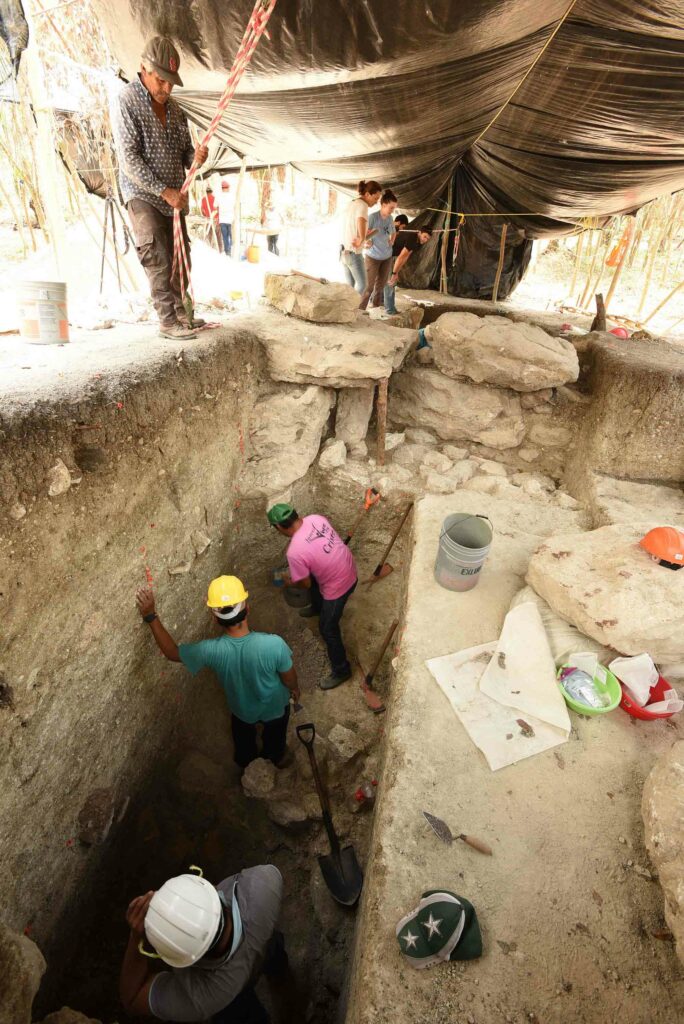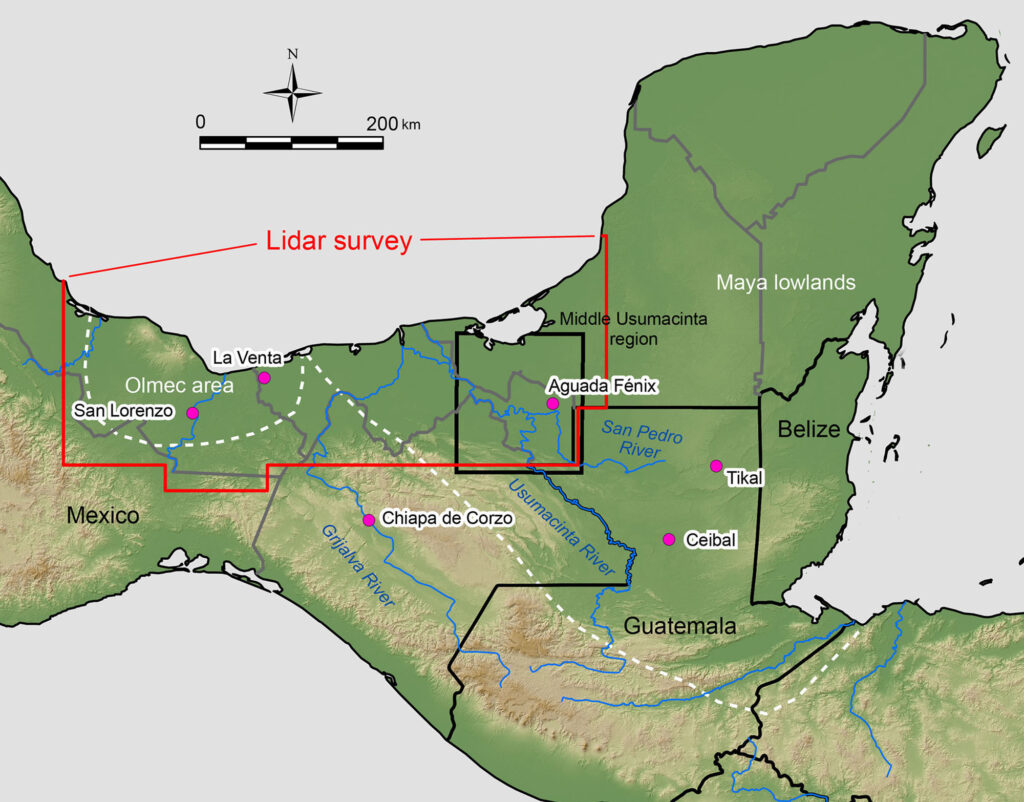The discovery of nearly 500 ancient ceremonial sites in southern Mexico could transform how experts trace the rise of the Mayan civilisation.
A team of international researchers led by the University of Arizona uncovered 478 ceremonial complexes using lidar technology in the Mexican states of Tabasco and Veracruz.
Lidar is a radar technology that can ‘cut’ through the thick rainforest and scan the area for ancient remains. The technology gives researchers a rough idea of what’s hiding under the vegetation before bringing in high-resolution lidar to scan more specific areas of interest.

(Inomata/Newsflash )
The lidar scan covered a huge expanse of land estimated to be equivalent to the area of Ireland.
The University of Arizona gave more details on the discovery in a statement on Monday, 25th October.
The university said in the statement: “The newly uncovered sites are located in a broad area encompassing the Olmec region and the western Maya lowlands.”
The statement also said: “The complexes were likely constructed between 1100 BC and 400 BC and were built by diverse groups nearly a millennium before the heyday of the Maya civilization between 250 AD and 950 AD.”
The Olmecs were the earliest known major Mesoamerican civilisation that flourished from around 1500 BC to about 400 BC.

(Inomata/Newsflash )
The researchers found that the complexes share similar features with the earliest centre in the Olmec area, San Lorenzo, which peaked between 1400 and 1100 BC.
The discovery comes just one year after researchers found the Aguada Fenix monument which is believed to be the largest and oldest Mayan monument.
The study found that Aguada Fenix adopted San Lorenzo’s form around 1100 BC suggesting that there was a link between the development of the Mayan civilisation from the Olmecs.
The researchers think that San Lorenzo may have served as a template for the construction of the Mayan Aguada Fenix complex.
Takeshi Inomata, the paper’s first author, said: “The sites are big horizontally but not vertically.”
“People will be walking on one and won’t notice its rectangular space, but we can see it with lidar really nicely.”

(Inomata/Newsflash )
Experts had previously assumed that San Lorenzo was a unique site and completely different from what came later on in terms of site structure.
Inomata said: “But now we show that San Lorenzo is very similar to Aguada Fenix – it has a rectangular plaza flanked by edge platforms. Those features become very clear in lidar and are also found at Aguada Fenix, which was built a little bit later.”
He added: “This tells us that San Lorenzo is very important for the beginning of some of these ideas that were later used by the Maya.”
The ceremonial sites are believed to have been used for rituals and to host gatherings involving large groups of people.
The sites also appear to have precisely measured orientation lining them up with the sunrise on a certain date.

(Inomata/Newsflash )
Inomata said: “There are lots of exceptions; for example, not every site has enough space to place the rectangular form in a desired direction, but when they can, they seem to have chosen certain dates.”
One explanation for the dates chosen by those who built the site is a link to the Zenith passage day which is when the sun passes directly overhead.
Zenith day occurs on 10th May in the region and marks the start of the rainy season. It signalled to ancient civilizations when to start planting maize.
Inomata added: “This means that they were representing cosmological ideas through these ceremonial spaces.”
“In this space, people gathered according to this ceremonial calendar.”
Inomata stressed that there is a huge amount left to learn about the site and he hopes to continue his research alongside many other scholars as they attempt to piece together the history of the ancient civilisations that once ruled Mexico.

Excavattion at Aguada Fenix.
(Inomata/Newsflash )
Excavation at Aguada Fenix with Daniela Tiradan (left) and Veronica Vazquez (right).
(Inomata/Newsflash )
To find out more about the author, editor or agency that supplied this story – please click below.
Story By: Peter Barker, Sub-Editor: Joseph Golder, Agency: Newsflash
The Ananova page is created by and dedicated to professional, independent freelance journalists. It is a place for us to showcase our work. When our news is sold to our media partners, we will include the link here.




